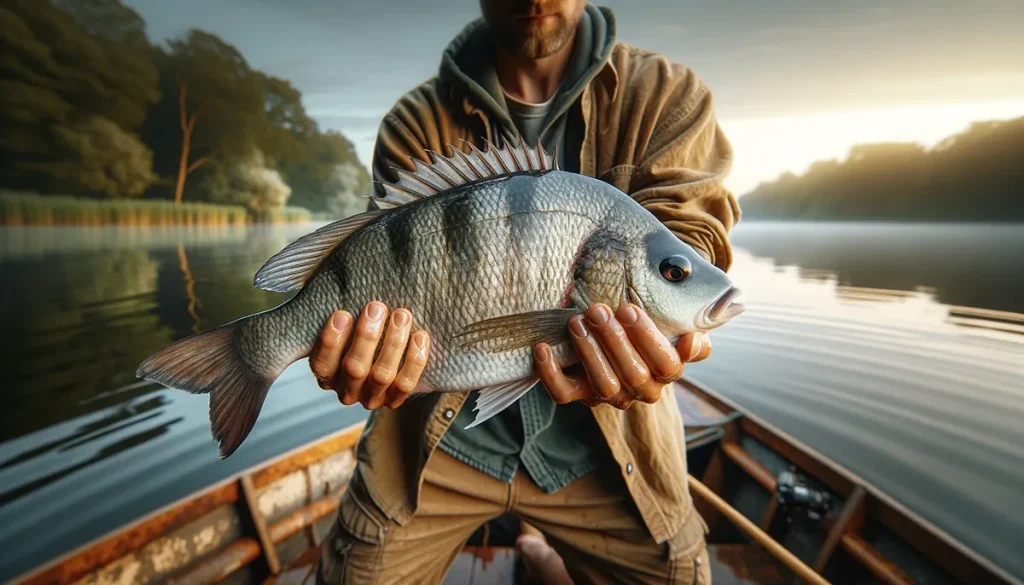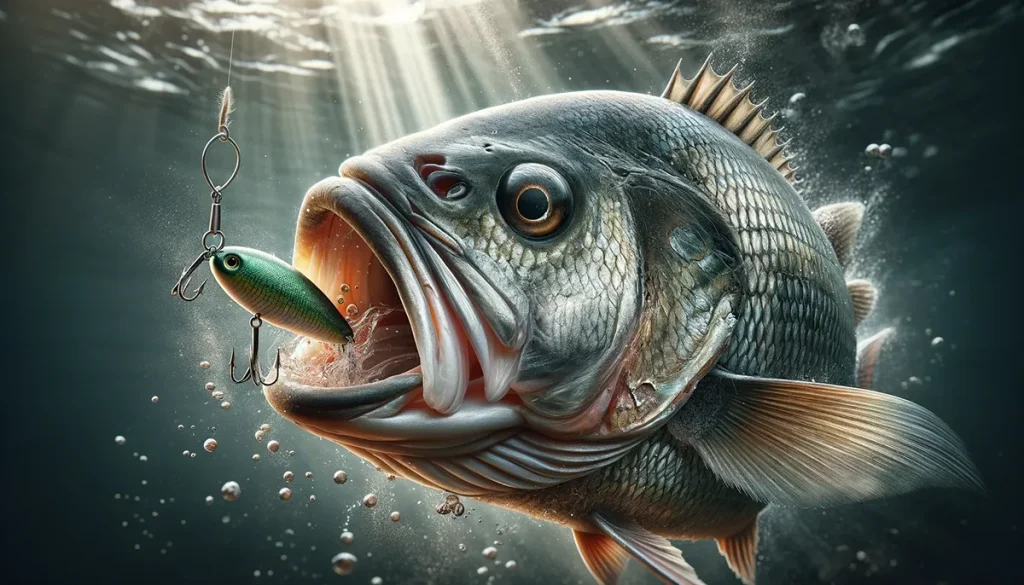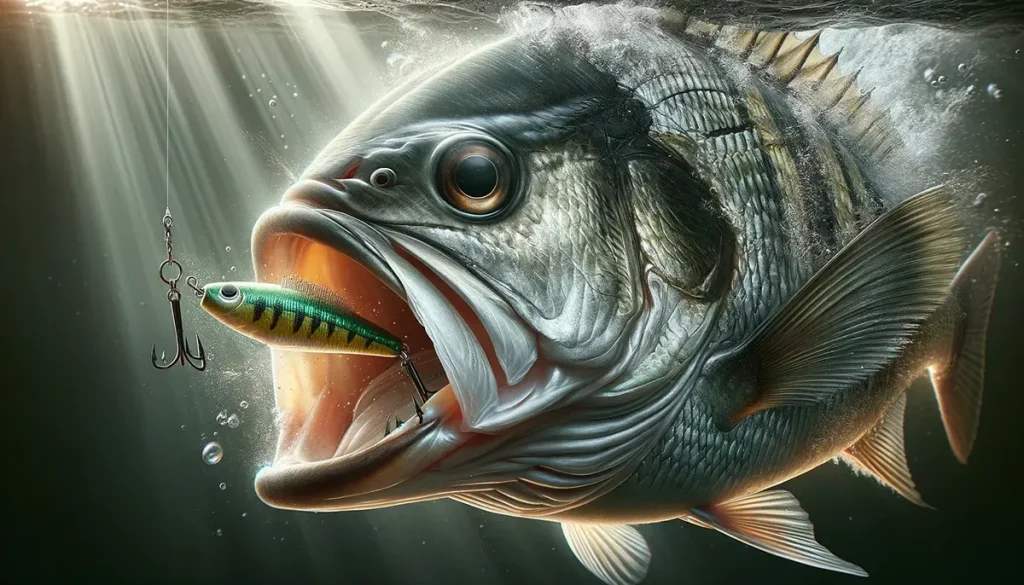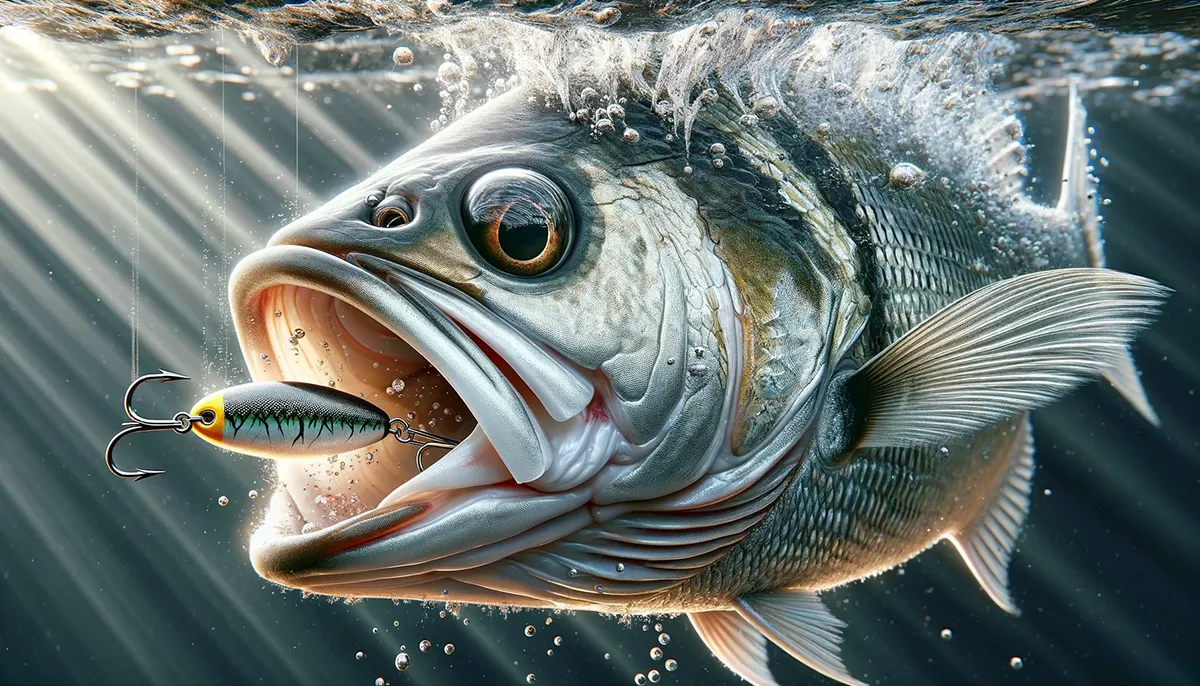G’day, mates! Welcome to the ultimate guide on bream fishing, a true blue Aussie pastime that gets us all excited to hit the water. Whether you’re just starting out or you’re already a bit of a legend with the rod, knowing how to catch bream can make all the difference in your fishing adventures. These crafty fish can be a bit tricky to snag, but with the right know-how and bait, you’ll be reeling them in like a pro in no time.
Now, speaking of bait, finding the best bait for bream is key to a successful day out on the water. Whether it’s the juicy worms that get them biting or the allure of soft plastics dancing through the water, choosing the right bait is as important as the spot you pick.
And hey, while we’re on the topic of getting the edge in your bream fishing game, why not check out our ReelBoss fishing lines? Over at ReelBoss, we’ve got the gear that’ll make the bream wish they’d never met you. Our lines are top-notch, designed to help you cast further and with more precision, so those breams don’t stand a chance. Give it a burl and see the difference for yourself. Happy fishing, and may your lines always be tight!

Understanding Bream Fishing
Diving into fishing for bream, there’s a real buzz that hooks you. It’s not just about landing a fish; it’s the cunning game of outsmarting them, making every catch a trophy in its own right. Bream, with their savvy ways, offers a challenge that’s both thrilling and rewarding.
The key to catching these crafty fish is understanding their habitat. Bream have a penchant for deeper water, where they can skulk around structures and feast in safety. These spots are their playgrounds and dining rooms, making them prime targets for anglers.
Timing is also critical. During high tide, breams are on the move, hunting for the buffet brought in by the rising waters. This is your golden hour, the perfect time to cast your line and anticipate the strike.
So, for those keen on mastering fishing for bream, focus on these deeper havens, especially when the tide’s in your favor. It’s about strategy, timing, and a bit of patience. Get these right, and you’re well on your way to a memorable catch.
Essential Gear for Bream Fishing
Righto, let’s chat about the essential gear for bream fishing. If there’s one thing that can turn a good fishing day into a great one, it’s having the right tools for the job. When targeting bream, the choice of rod and reel can make all the difference. That’s where a light spin rod and an ultra-light spin setup come into play. These are not just fancy terms; they’re your ticket to a more precise, efficient, and enjoyable fishing experience.
A light spin rod is perfect for those delicate presentations required to tempt a bream, offering the sensitivity to feel the gentlest of nibbles. Pair it with an ultra-light spin reel for a combo that’s easy to handle, allowing you to cast all day without a worry. This setup is a dream for finesse fishing, where precision and subtlety are key.
Now, when it comes to lures, soft plastics are a bream angler’s best friend. The versatility and lifelike action of these lures are unbeatable, especially when worked with a spinning rod. This combination allows for pinpoint accuracy and the ability to work your lure through those bream-holding zones with ease. Whether you’re flicking lures around the structure or casting into deep water, the right gear will have you covered.
Best Bait and Lures for Bream

Now, let’s dive into the nitty-gritty of the best bait for bream and the lures that’ll have you boasting about your catch. When it comes to fishing for bream, the bait or lure you choose is as crucial as your choice of rod and reel. Bream can be finicky feeders, so offering them something they can’t resist is key to a successful day on the water.
Soft plastics stand out in the world of bream fishing. Their versatility and ability to mimic the natural prey of bream make them an unbeatable choice. Whether you’re targeting bream in shallow waters or casting into deeper water, soft plastics can be jigged, twitched, or simply left to drift with the current, appealing to the bream’s predatory instincts.
But let’s not overlook the importance of natural bait. The best bait for bream often includes live worms, yabbies, or even small pieces of fish flesh. These can be especially effective in quieter waters or when the bream are being particularly wary. Whether you opt for the lifelike action of soft plastics or the natural appeal of live bait, matching your offering to the conditions and the bream’s feeding habits is your best bet for a successful haul.
Techniques to Catch Bream
To catch bream effectively, mastering a few key techniques can make a world of difference. Using a light spin rod is a game-changer in this pursuit. The sensitivity and flexibility of these rods allow for a finesse approach, giving you the upper hand in feeling even the slightest nibble. This setup is ideal for deploying a range of lures, including soft plastics, enabling precise control over the presentation and movement of your bait.
When targeting bream, consider the environment and adapt your strategy accordingly. Soft plastics are particularly effective when used with a light spin rod, as they can be manipulated to mimic the erratic movement of bream’s natural prey. The trick is in the retrieval technique; a slow, steady retrieve with occasional twitches can provoke bream to strike, thinking the lure is an easy meal. Remember, the goal is to target bream with a technique that appeals to their natural hunting instincts, making your lure irresistible. With patience and practice, these methods will significantly boost your success rates in bream fishing.

Reading the Water for Bream Fishing
Understanding how to read the water is a crucial skill in the quest to catch bream. One key factor to keep an eye on is the high tide. Breams are known to feed more actively during these periods, moving into shallower areas to hunt for food. This behavior makes high tide an ideal time to target them, as they’re more likely to venture closer to shore and into areas accessible to anglers.
To maximize your chances, observe the water’s movement and look for signs of bream activity, such as surface disturbances or baitfish being chased. These indicators can lead you to prime bream hotspots. Additionally, don’t overlook the potential of deeper water adjacent to these active zones, especially during lower tides. Bream often retreats to these areas to feel secure, making them perfect spots to cast your line.
By paying close attention to tidal movements and understanding how bream responds to these changes, you can significantly improve your ability to catch bream. It’s all about timing, observation, and applying this knowledge to your fishing strategy.
Tips for Successful Bream Fishing
Dive into these expert tips for successful bream fishing to enhance your skills and increase your catch rate, whether you’re using bait or testing the waters with an ultra-light spin setup.
Patience is Key
When it comes to bream fishing, patience isn’t just a virtue—it’s essential. Bream can be cautious feeders, especially when pressured. Take your time, settle into a good spot, and wait for the bream to come to you. Using bream with bait requires a gentle touch and a bit of stealth, so keep movements minimal and noise to a low.

High Tide Advantage
Timing your outings around the high tide can significantly increase your chances of success. During these periods, bream are more likely to feed actively, giving you the perfect opportunity to present your bait or lure. Keep an eye on tide charts and aim to fish during these peak times for the best results.
Ultra-Light Spin for Stealth
An ultra-light spin setup is not just about making your fishing experience more enjoyable; it’s about stealth and precision. The lighter line and sensitive rod allow for subtle presentations, making your bait or lure more enticing to wary bream. This setup is perfect for those clear, calm days when bream is easily spooked, allowing you to cast your line with minimal disturbance.
By incorporating these tips into your bream fishing strategy, you’ll be better equipped to tackle the challenges and reap the rewards of landing these elusive fish. Whether you’re baiting up or casting lures, remember that success in bream fishing comes from understanding the fish, and the conditions, and refining your approach with each outing.
Conclusion
Throughout this guide, we’ve journeyed through the essentials of bream fishing, from selecting the best bait for bream to mastering the techniques that make how to catch bream more than just luck. We’ve delved into the importance of gear, highlighting the effectiveness of a light spin rod and ultra-light spin setups for that finesse touch needed in bream fishing. The role of soft plastics and natural baits was underscored, emphasizing their lure in deeper water and during high tide — the prime times for bream to bite.
But the true art of bream fishing lies in experimentation. Each outing is an opportunity to test new waters, try different baits, lures, and techniques. What works one day in targeting Bream might need tweaking the next. So, I encourage you to mix it up, keep an open mind, and discover the combinations that bring you the most success in your bream fishing adventures. Happy fishing, and may your lines always be tight and your nets heavy with the day’s catch!
